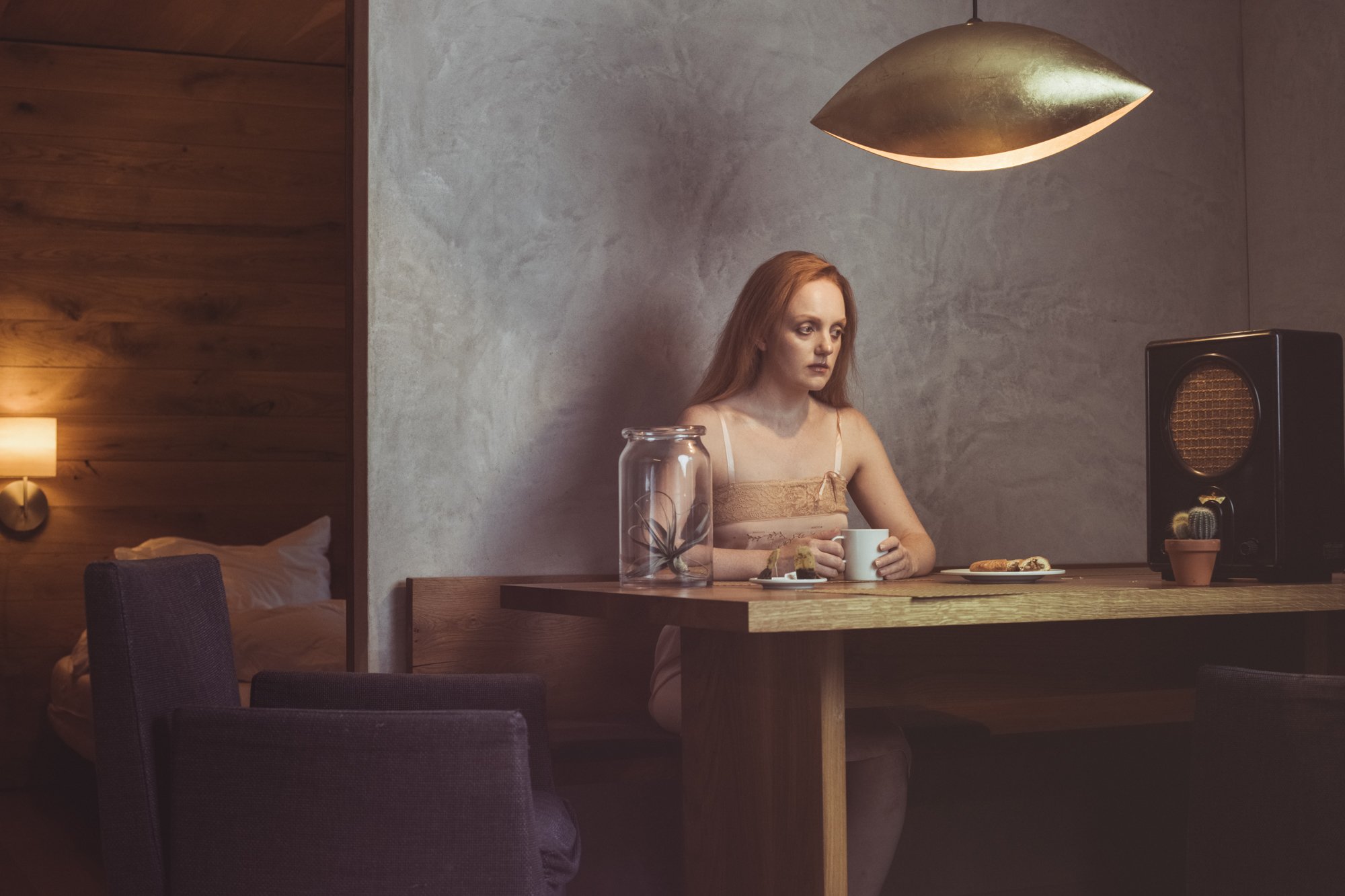Behind the image: “The Entire World Listens”
Project Summary
The images in ‘31 explore social and political parallels between the present and the late 1920s and 1930s.
The project’s limited-edition archival pigment prints measure 28 x 42 cm (11 x 16.5 inches).
caption to “the entire World Listens”
“The Entire World Listens" uses the historical precedent of prewar Germany to warn against the ever-increasing influence of mass media as a propaganda tool. When Hitler rose to power in 1933 the Nazi party began to promote its ideology, relying heavily on the Volksempfänger (“people’s receiver”), an inexpensive radio commissioned by the Reich itself. It became a propaganda presence in public spaces and, because it was affordable, in private homes as well. Today, the reach and perils of communications media are far greater. Cable television allows viewers to tune into polemical talk shows that simply reinforce their existing beliefs and sow public discord.
Cellphones and computers provide citizen access to social media platforms on which governments and corporations profile visitors’ activity. This information can then be used to seed these platforms with furtive, targeted messages that increase bad actors’ power and wealth. Are they a more insidious propaganda tool than Hitler’s Volksempfänger?
The Entire World Listens (Die Ganze Welt hört) - 2020
Copyright : Zsofia Daniel; In frame: Ivoryflame Model ; Hair & Make Up: Adrienn Bodor-Pek
The Title
The title of the image "Die ganze Welt hört" (“The Entire World Listens”) refers to the Nazi regime’s July 1933 campaign advertising the Volksempfänger, or “People’s Radio,” that it had commissioned for propaganda purposes. Its slogan read “All of Germany listens to the Führer with the People’s Radio”. One month before the rollout of the radio, every shop window displayed a poster promoting it. Besides propaganda, this inexpensive radio brought entertainment and music to the masses. The radio had limited reception both to keep down its cost and to reduce the chance of listeners picking up foreign broadcasts that might compete with its messaging.
The Nazi regime, just like today's political systems, was keenly aware of the power of mass media. Even then, powerful speeches over the airwaves had garnered attention and secured election successes for the party. By 1942 "radio wardens" ensured that people listened to the Volksempfänger’s programs everywhere—not just at home, but in factories, cafés, and in the streets.
Mobile phones and computers have long since replaced the Volksempfänger, delivering profiled information to their users through the Internet. It seems that not unlike Germans of the 1930s and 1940s we cannot escape our politicians' messaging, even if we don’t want to listen. Likewise, will the constant rhetoric induce us to turn specific social and ethnic groups into scapegoats, dehumanising and threatening them?
Photograph of 1936 propaganda poster.
Credit: Private Collection / AF Fotografie
Detail of the image “Die Ganze Welt hört” from the fine art photography project ‘31
Credit: Zsofia Daniel
How we used the radio
When I created this photograph, my crew was actually listening to the Volksempfänger. To achieve a more genuine reaction I placed a cellphone inside the radio, and used YouTube to play several of Goebbels' and Hitler's speeches as we worked. The radio lit up and, as in its heyday, broadcast the same propaganda.
Whenever I look at this image, I appreciate the irony of physically combining these two powerful pieces of equipment. Ninety years may separate their use, but in my view they fulfill the same purpose.
Plants
Cacti and succulents have an undoubted place in the aesthetic of the 1920s and 1930s, during which design principles and even popular taste valued precise, pure forms and order.
During this era these exotic plants, often imported from South America, became fashionable household items. They were such a rage that popular media, including songs and comedy routines, often featured them. Cacti and succulents also fascinated German painters and photographers such as Georg Scholz, Albert Renger-Patzsch, and Aenne Biermann.
The power of these almost sculptural plants, which bring to mind faraway lands we might want to explore, still hasn't diminished. Now they are found in many households, where their low maintenance and low cost make them an excellent fit for today's busy, work-oriented lifestyle.
Georg Scholz : Kakteenstilleben mit Semaphoren II, 1923)
Comedian Harmonists singing Mein kleiner grüner Kaktus ("My Little Green Cactus") in 1934
How we used exotic plants
I used both a cactus and an air plant in this image. Sitting on the two sides of the table, they create an imaginary barrier between the viewer and the model. This suggests, as in German painter Walter Gramatté's Cacti Lady, that these plants may be personal guardians of the protagonist.
Detail of the image “Die Ganze Welt hört * from the fine art photography project ‘31
Credit: Zsofia Daniel






